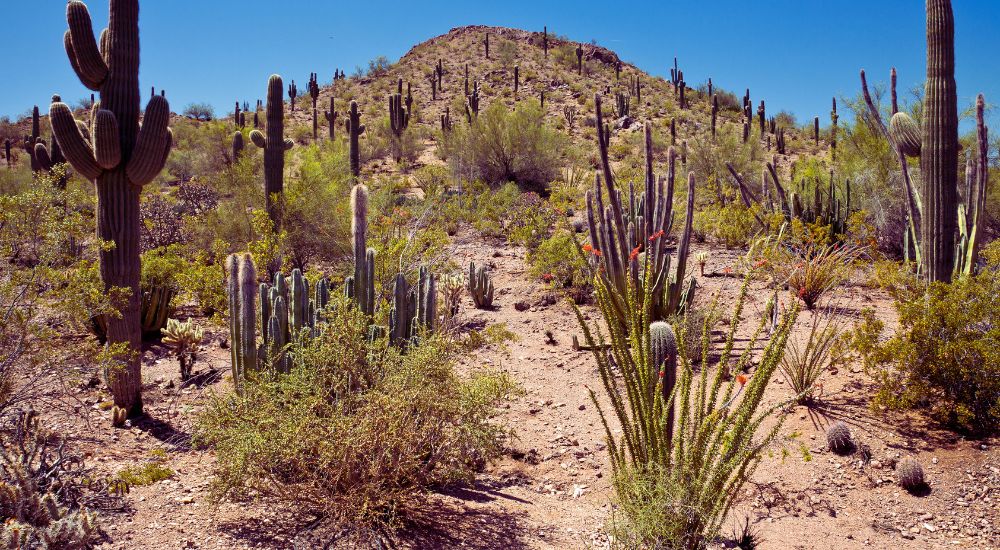Spanning parts of Arizona, California, and Mexico, the Sonoran Desert is a unique ecosystem teeming with diverse wildlife, iconic cacti, and breathtaking landscapes. Unlike typical deserts, the Sonoran boasts lush vegetation and a rich tapestry of flora and fauna, making it a must-visit for nature enthusiasts and adventure seekers alike.
The Unique Ecosystem of the Sonoran Desert

The Sonoran Desert is renowned for its biodiversity. Home to the majestic saguaro cactus, this desert supports over 2,000 plant species and numerous animal species, including coyotes, javelinas, and the elusive Gila monster. Its varied terrain ranges from arid plains to mountainous regions, offering habitats for a wide array of wildlife.
For an immersive experience, the Arizona-Sonora Desert Museum in Tucson offers a blend of zoo, botanical garden, and natural history museum, providing insights into the desert’s rich biodiversity.
Best Times to Visit



While the Sonoran Desert can be visited year-round, the most comfortable seasons are:
- Spring (March to May): Wildflowers bloom, and temperatures are mild.
- Fall (September to November): Pleasant weather and fewer crowds.
- Winter (December to February): Cooler temperatures make for comfortable hiking.
- Summer months can be extremely hot, so if visiting during this time, plan activities during early morning or late evening hours.
Top Activities in the Sonoran Desert


Hiking and Nature Trails
The Sonoran Desert offers numerous trails suitable for all levels:
- Papago Park: Located in Phoenix, this park features easy trails and the famous Hole-in-the-Rock formation.
- McDowell Sonoran Preserve: Offers over 200 miles of trails amidst stunning desert scenery.
- South Mountain Park: One of the largest municipal parks in the U.S., ideal for hiking and mountain biking.
For more hiking options, Visit Phoenix provides a comprehensive guide to the best trails in the area.
Wildlife Watching
Birdwatchers and wildlife enthusiasts will find the Sonoran Desert a paradise. Keep an eye out for roadrunners, hawks, and various reptile species. Early mornings and evenings are the best times for wildlife sightings.
Guided Tours
To gain deeper insights into the desert’s ecosystem, consider joining a guided tour. Options include jeep tours, horseback riding, and hot air balloon rides, offering unique perspectives of the landscape. Companies like GetYourGuide offer a variety of tours tailored to different interests.
Safety Tips for Desert Exploration

- Stay Hydrated: Always carry ample water, especially during hikes.
- Sun Protection: Wear sunscreen, hats, and sunglasses to protect against the intense sun.
- Know Your Limits: Choose trails that match your fitness level and inform someone about your plans.
- Wildlife Caution: Maintain a safe distance from animals and avoid feeding them.
For a detailed guide on desert safety and exploration tips, The Phoenix Review offers valuable insights.
Conclusion
The Sonoran Desert is a testament to nature’s resilience and beauty. From its diverse wildlife and unique flora to its scenic trails and cultural attractions, it offers an enriching experience for all visitors. Whether you’re seeking adventure or tranquility, the Sonoran Desert in Arizona promises memories that will last a lifetime.

